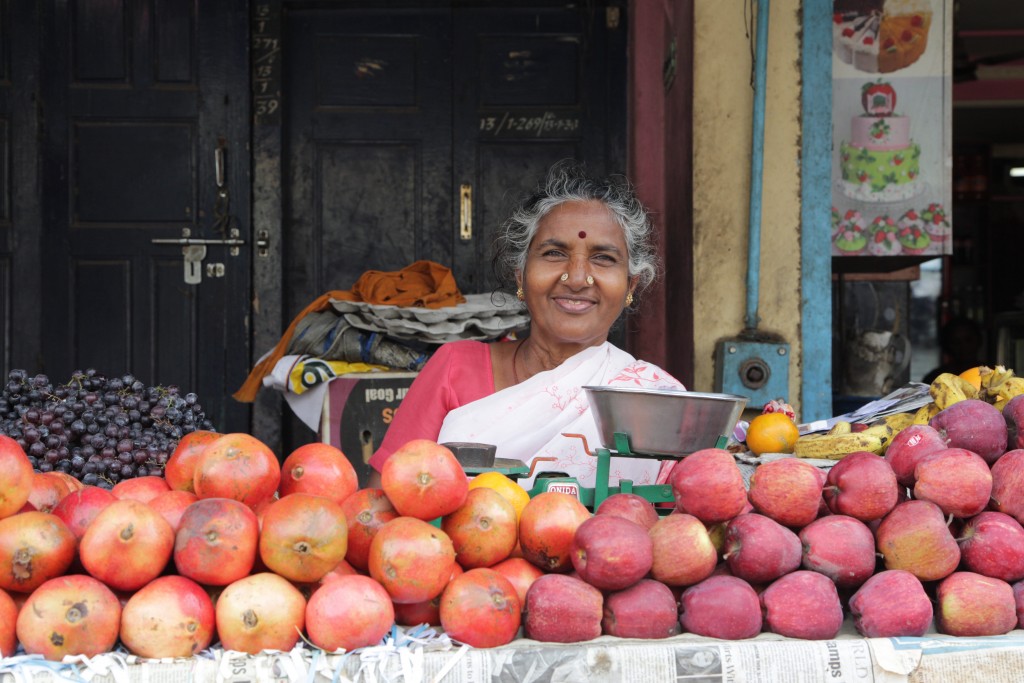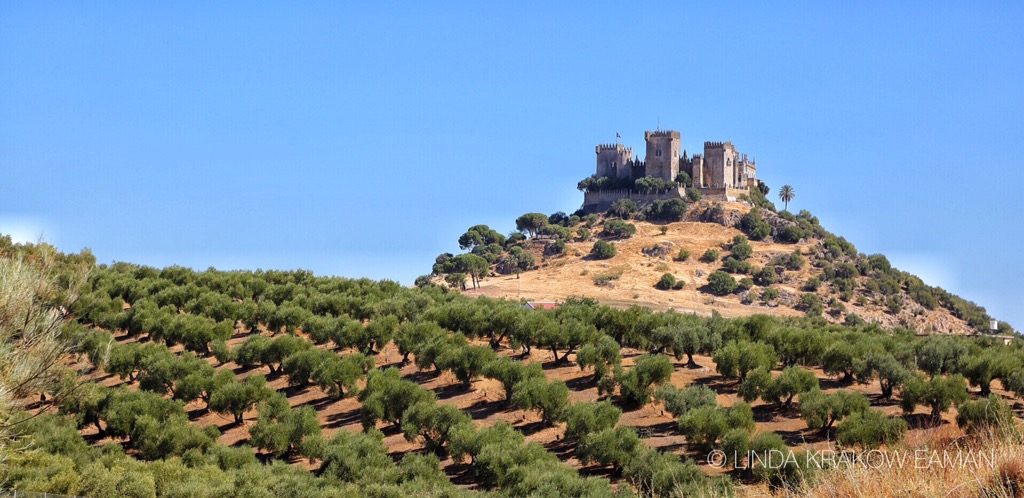Pie and Mash
One of the challenges, when returning to a city you’ve spent time in before, is finding new corners to explore. So when I saw Broadway Market mentioned in the hotel pamphlet–a market I somehow hadn’t heard of during our year in London–it became our destination one Saturday morning.
Broadway market’s neighborhood has been a center of commerce since Roman times or even before, and its proximity to the Regent’s Canal made it important in the 19th century. But these are difficult days for markets. Once an integral part of a city, they’ve been upstaged over the years by supermarkets, department stores, online shopping, cheap mass-market and factory-farmed goods. In the 1970s and 80s, having significantly declined, the street was almost demolished to make room for a highway. Thankfully, community activists saved and revived the market and it is now a vibrant part of the community.
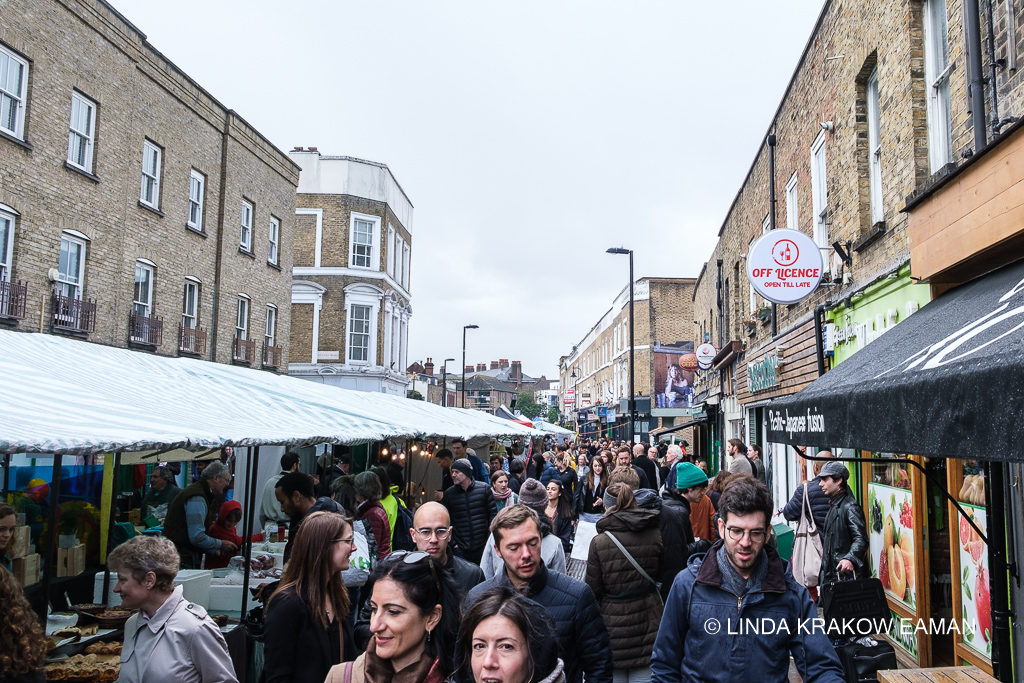
This is a big part of what I love about London: the many layers of history that underlie and surround everyday life. In my mind’s eye, it’s like a movie, where the millennials buying capuccinos and vegan sausage are surrounded by ghostlike black-and-white footage of Roman traders walking alongside the Victorian horse-drawn coaches and ox-wagons and the 1950s dockworkers. Even the nearby London Fields park, where we saw families walking to and from the market, children on the playground, and cricketers playing a match, dates back hundreds of years; it was once the last pasture for livestock being brought to market, and it hosted an anti-aircraft battery in WWII.
It’s a nice enough market, of the gentrified variety. Organic produce, artisan breads, locally made cheese and sausage, vats of very tempting olives. A stall selling nothing but photography books hooked me in for quite a while, offering cover from a sprinkle of rain, a nice chat about street photography with the vendor, and of course a book to take home. (I would have liked to buy a dozen, but I pride myself on traveling light, and had already picked up a few others. Now I understand why my dad used to ship boxes of books home from his travels!)
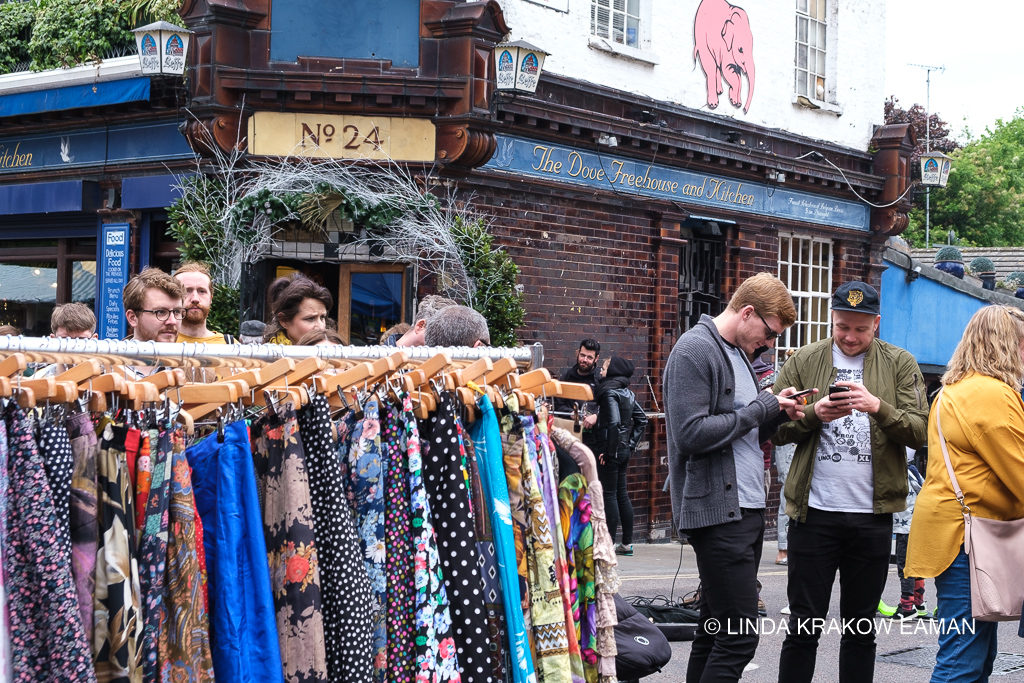
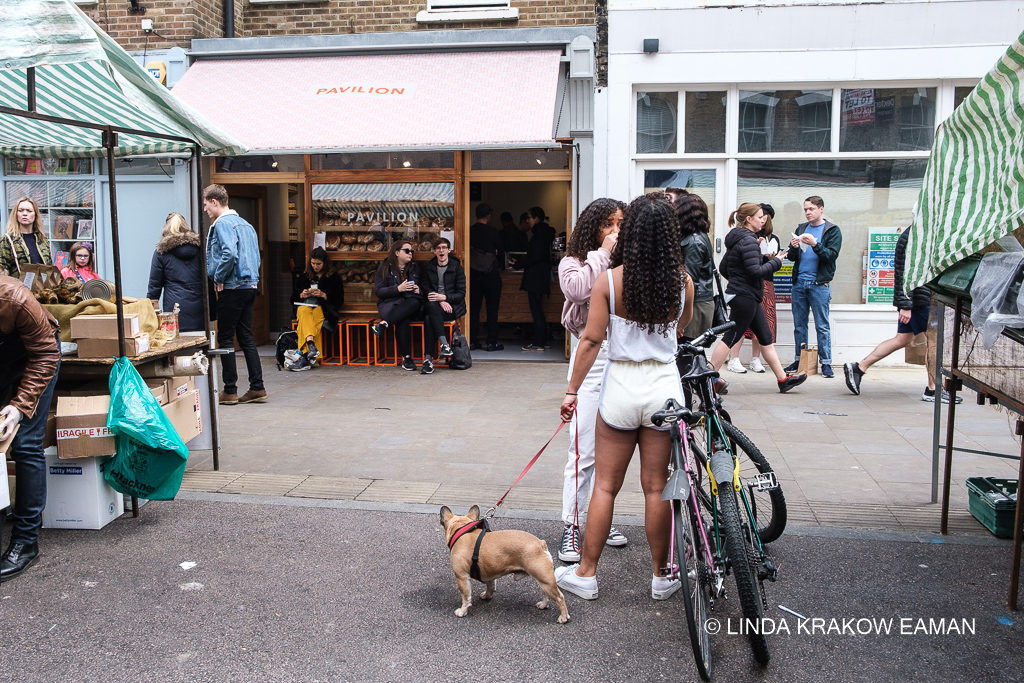
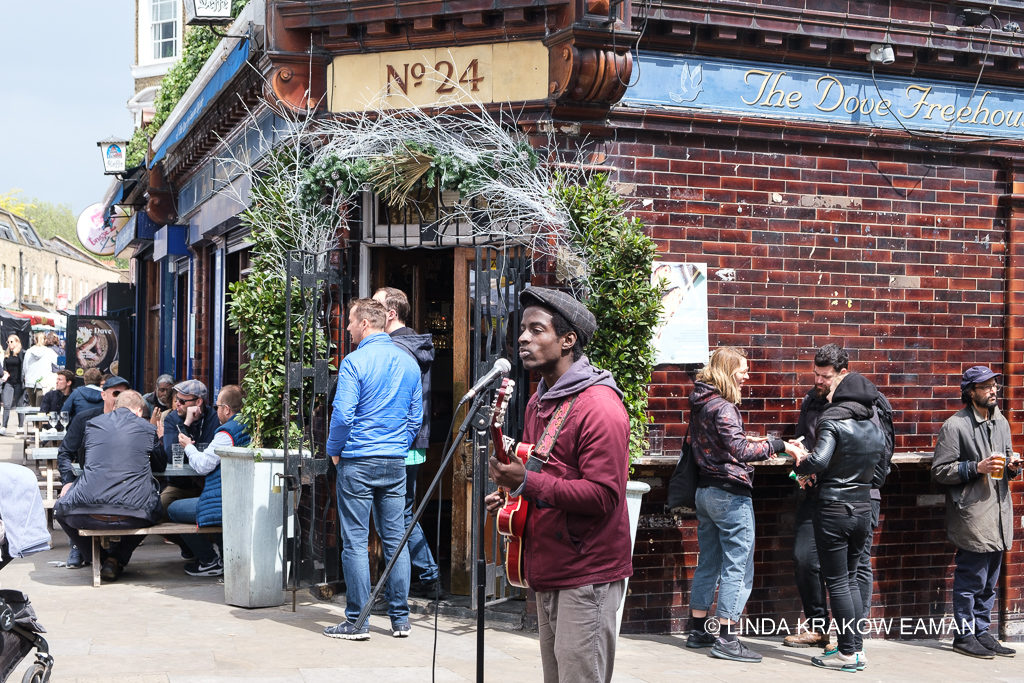
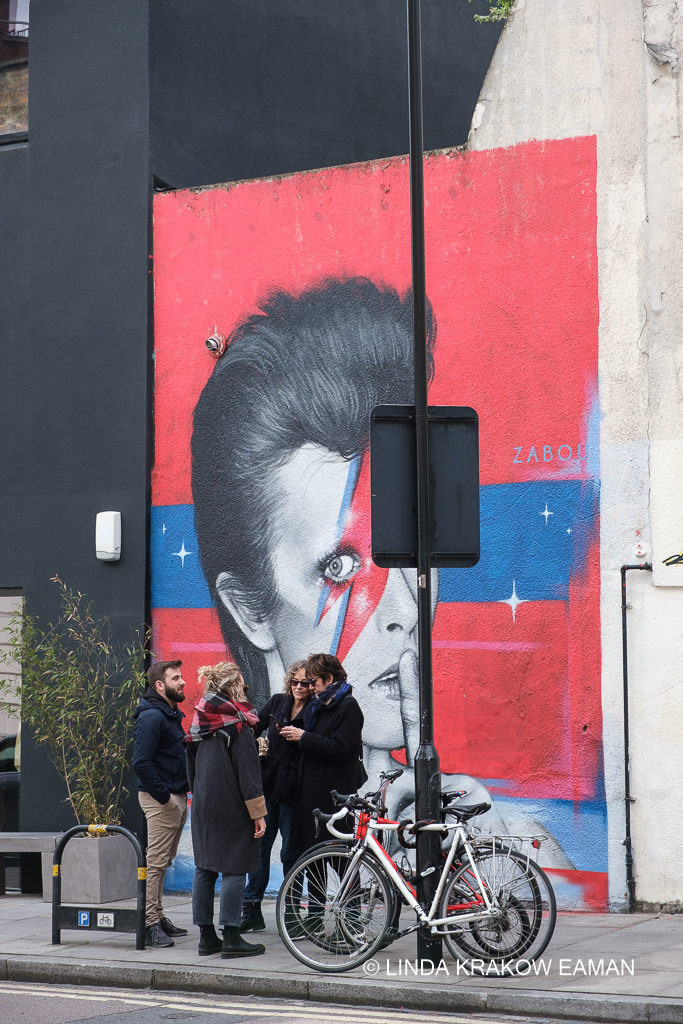
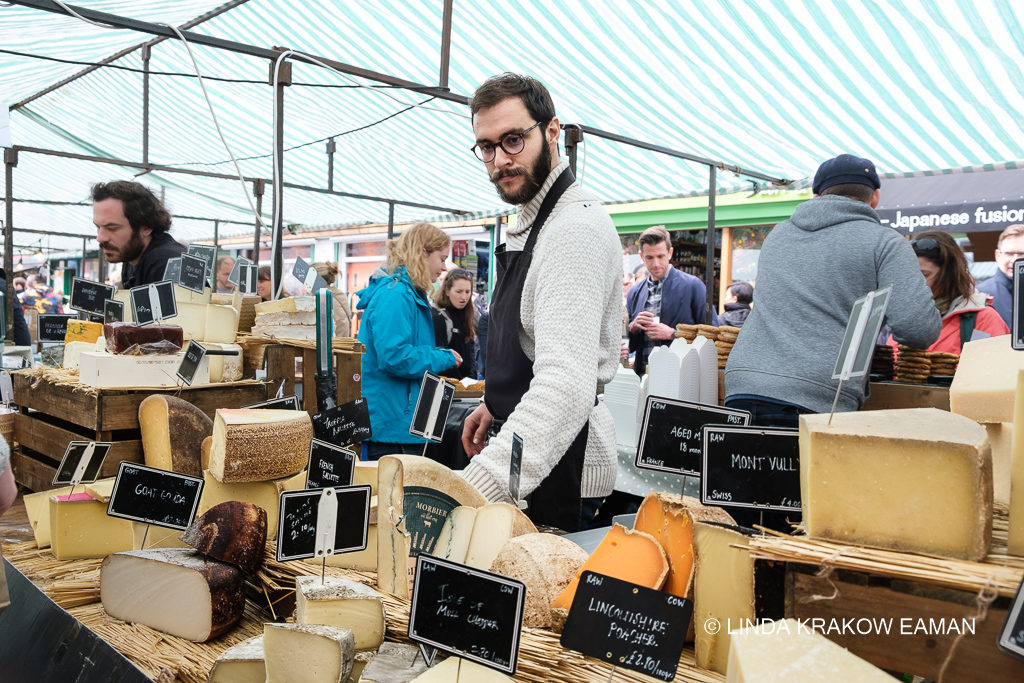
The most exciting part of the day, though, was the pie and mash shop. These were a staple of 19th century London’s working class East end, serving cheap, filling food. Workers and schoolchildren with only a few pennies for their tea could get a meat pie with a scoop of mashed potatoes and a parsley sauce known as “liquor”. Two pies and double mash if you were extra hungry, just a scoop of potatoes with liquor if that’s all you could afford. They also sold stewed and/or jellied eels, one of the only fish that could survive in the polluted Thames. Pie and mash shops were once all over the area; now only a few remain. And the bookseller informed me that one of those–scheduled to close for good, soon–was just down the street!
We weren’t hungry but I was not going to miss the chance to experience a pie and mash shop! Who knows… they may all be gone the next time I go back.

It’s not hard to imagine you’ve stepped back in time. The marble table tops, wooden bench seats, and tiled walls are immaculate but probably haven’t changed in decades. Aside from the prices, the menu hasn’t changed… there’s nothing on offer other than pie, mash, and eels that are ladled out of a big black pot; a big brown bottle of chili vinegar sits on every table. I loved every bite, but I can see why pie and mash shops are losing the battle. It’s a homey meal, a taste of bygone days, but it doesn’t stand a chance against the lobster mac and cheese and duck confit burgers at the food stalls just a few feet away.


(Regrettably, I didn’t photograph the food… the best photo I’ve found is in this excellent article by Adam Coghlan: https://london.eater.com/2019/5/7/18535389/100-year-old-pie-and-mash-shop-east-london-hackney-f-cooke)
Where to go from here? Broadway Market is adjacent to the Regent’s Canal. Built in 1812 to allow passageway of freight to England’s industrial North, its working days were short as railways and motorways soon provided more efficient transportation. Today, the canals seem to have their own ecosystem–literally, as conservation areas for fauna and flora, but also in the community that thrives around them. Runners, walkers, and cyclists enjoy the old towpaths, and the colorful narrowboats–from low-cost housing to party venues to luxury holiday homes–line the way.


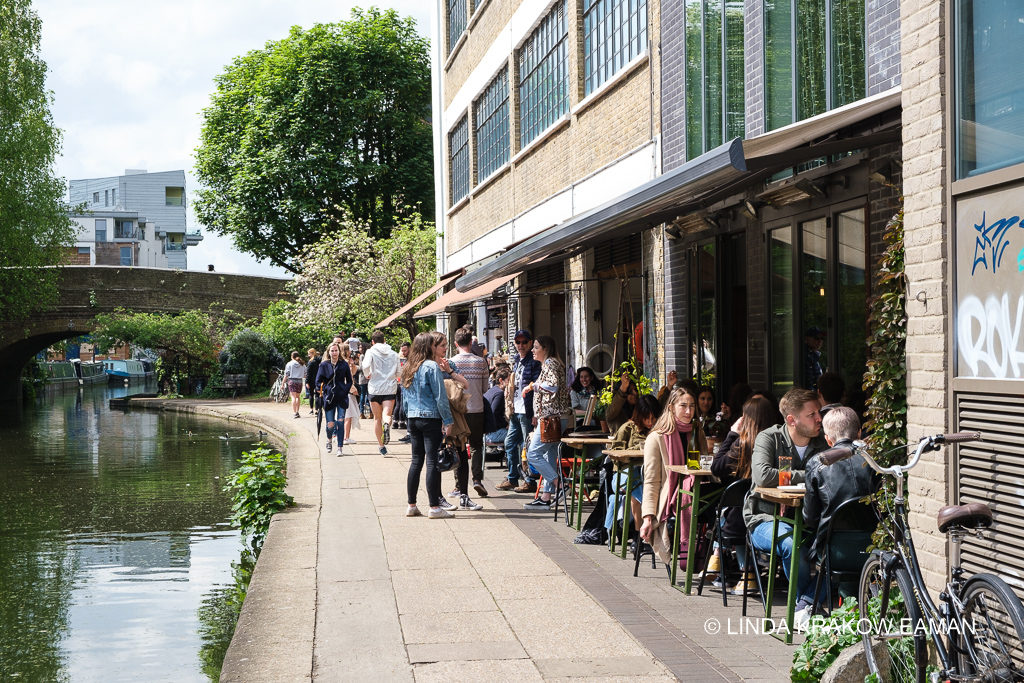
A lovely Saturday, indeed.

